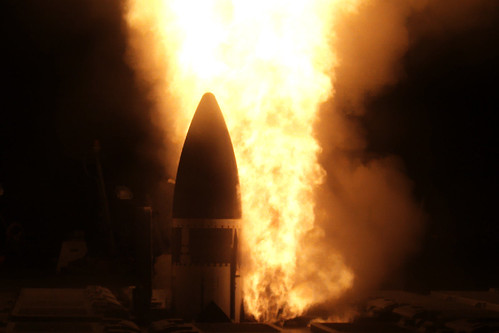U.S., NATO missile exercise in Europe: “Our air defenders train as we expect to fight”
Rick Rozoff
A press release issued on February 3 by the U.S. Air Forces in Europe and Air Forces Africa’s European Integrated Air and Missile Defense Center announced the completion of five days of planning for an upcoming NATO interceptor missile exercise in Europe, Steadfast Armour-21 (STAR-21). NATO was also involved with the preparatory phase of the exercise.
The various appellations and acronyms contained in this brief piece are lengthy, complex and all but impossible to take in in a single reading, much less readily recall, but the very words they contain should be as alarming as the agencies and operations described are unknown to all but a select few of the strategically initiated. (One wonders how many members of the U.S. Congress which recently authorized funding for all of them as part of this year’s $740-billion Pentagon budget – much less their constituents who are paying for them – have ever heard of the breathtaking array of commands, warfare centers, strike forces and missile defense centers herein mentioned?)
The U.S. Air Forces in Europe and Air Forces Africa (USAFE-AFAFRICA) Warfare Center’s European Integrated Air and Missile Defense Center at the Ramstein Air Base in Germany led what was denominated a planning, coordination and execution exercise for a European Air and Missile Defense Exercise (EAMDEX) from January 22-26 of this year. European Air and Missile Defense Exercises are held periodically with U.S. participation and in conjunction with so-called missile defense counterparts from NATO. (The Ramstein Air Base also is home to NATO’s Allied Air Command and will soon host a new NATO space center as well.)
To leave no doubt as to what the U.S. and NATO are wargaming for, the above-cited release stated the exercise envisions a “simulated scenario that focuses on defending NATO territory and populations.” From which not-so-imaginary adversary seems excruciatingly obvious.
In relation to the upcoming missile exercise, Brigadier General Gregory Brady, commander of the 10th Army Air and Missile Defense Command, gave the game away by revealing: “Our air defenders train as we expect to fight….Team 10 showcased our capabilities as one of the most well-equipped and capable air and missile defense forces in the world and, at the same time, enhanced critical points of interoperability with our allies and partners.” The Pentagon has 70 military partners and allies in NATO. Of the fourteen nations that border Russia – need it be added, the unnamed adversary against whom U.S. and NATO anti-ballistic missile strategy and operations are aimed? – twelve are NATO partners and members. Only China and North Korea are not.
NATO’s participation in the first phase of this year’s Steadfast Armour consisted of assets from its Naval Striking and Support Forces NATO (STRIKFORNATO).
The global military bloc describes Steadfast Armour-21 as “NATO’s premier exercise for the rehearsal of the Ballistic Missile Defence (BMD) mission, executed from the operational to the tactical (unit) levels, utilizing existing plans and procedures in a simulated scenario defending NATO European populations, territory and forces.” Again, to “defend and deter” in regard to an unnamed but easily identifiable enemy.
Vice Admiral Eugene Black, dual-hatted commander of STRIKFORNATO and the U.S. Sixth Fleet, was quoted as follows:
“The integration of US and NATO commands, along with further improvements of the command and control systems, advances the capability and effectiveness of NATO BMD. STAR-21 marks a key milestone in the continuing U.S. European Phased Adaptive Approach and NATO Missile Defense program.”
For all the use of antiseptic, anodyne terms like defense and deterrence (which war is fought without claiming it is defensive or preemptive?), U.S. and NATO anti-ballistic programs, assets and operations can be employed for offensive purposes as well and for shooting down enemy missiles that survive a first-strike assault on their silos and launchers.

